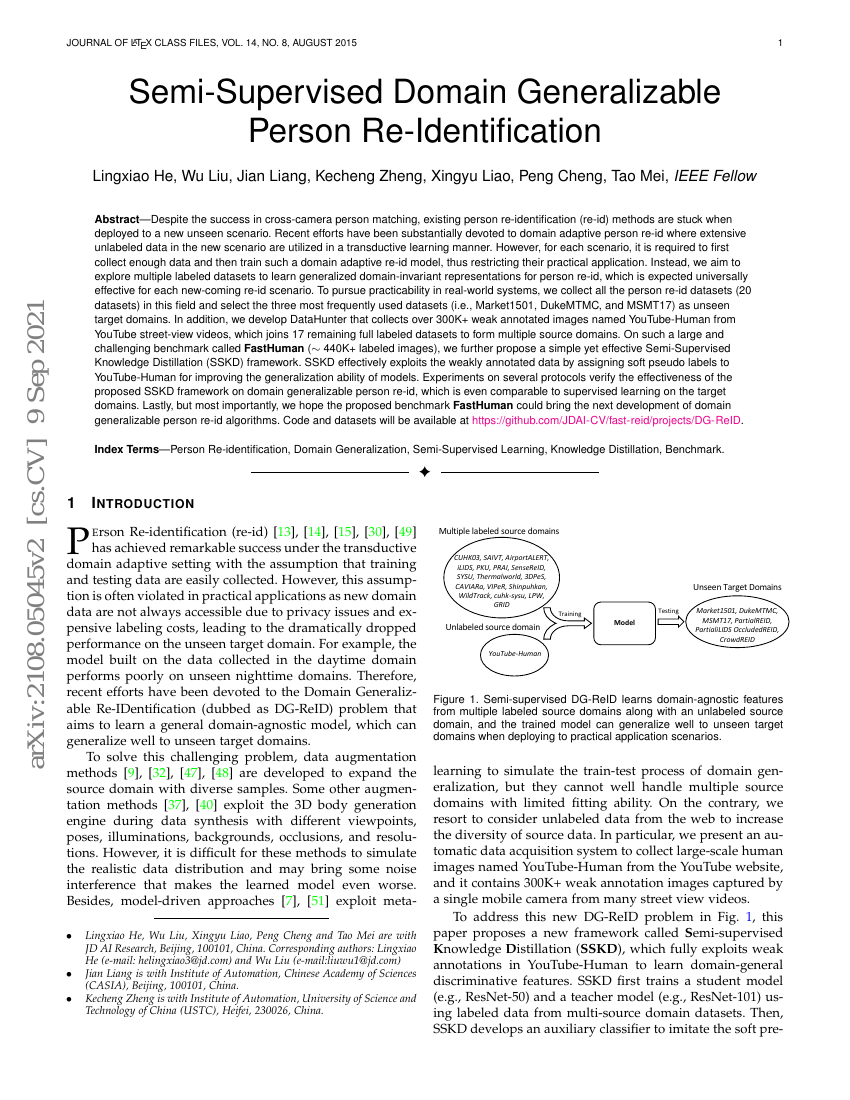Semi-Supervised Domain Generalizable Person Re-Identification

Existing person re-identification (re-id) methods are stuck when deployed toa new unseen scenario despite the success in cross-camera person matching.Recent efforts have been substantially devoted to domain adaptive person re-idwhere extensive unlabeled data in the new scenario are utilized in atransductive learning manner. However, for each scenario, it is required tofirst collect enough data and then train such a domain adaptive re-id model,thus restricting their practical application. Instead, we aim to exploremultiple labeled datasets to learn generalized domain-invariant representationsfor person re-id, which is expected universally effective for each new-comingre-id scenario. To pursue practicability in real-world systems, we collect allthe person re-id datasets (20 datasets) in this field and select the three mostfrequently used datasets (i.e., Market1501, DukeMTMC, and MSMT17) as unseentarget domains. In addition, we develop DataHunter that collects over 300K+weak annotated images named YouTube-Human from YouTube street-view videos,which joins 17 remaining full labeled datasets to form multiple source domains.On such a large and challenging benchmark called FastHuman (~440K+ labeledimages), we further propose a simple yet effective Semi-Supervised KnowledgeDistillation (SSKD) framework. SSKD effectively exploits the weakly annotateddata by assigning soft pseudo labels to YouTube-Human to improve models'generalization ability. Experiments on several protocols verify theeffectiveness of the proposed SSKD framework on domain generalizable personre-id, which is even comparable to supervised learning on the target domains.Lastly, but most importantly, we hope the proposed benchmark FastHuman couldbring the next development of domain generalizable person re-id algorithms.